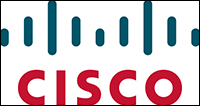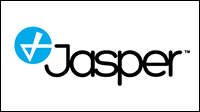Networking giant Cisco says it is acquiring Jasper, a private, cloud-base IoT connectivity and services provider based in Santa Clara, Calif.. Cisco will pay $1.4 billion in cash and assumed equity awards, plus additional retention-based incentives.
During a conference call yesterday to announce the deal, Rob Salvagno, Cisco’s VP of corporate development, praised Jasper’s CEO, Jahangir Mohammed, for his vision in building out the Jasper platform throughout the past decade.

“Jasper delivers the largest IoT service platform in the market, with over 3,500 enterprise customers, served through 27 service provider partners and available in over 100 countries,” Salvagno said. “Together, Jasper and Cisco can accelerate the adoption of IoT with greater impact and at greater scale than either of us can do alone.”
Cisco, which reported revenue last year of $49.16 billion, sells IoT gateways (used to communicate with wireless sensors and other IoT devices), as well as ruggedized routers and switches, that are currently used in Internet of Things applications in industrial vertical markets, in order to collect and route data from sensors that are increasingly added to stationary machinery and mechanical systems. Cisco also sells software used to filter incoming IoT-related data and perform analytics, to help end users derive value from that data. Jasper is purely a software and services company, and most of its customers have mobile IoT applications, ranging from connected cars to connected tractors and mobile asset management. Rowan Trollope, the senior VP and general manager of Cisco’s Collaboration and IoT Technology Group, explained that acquiring Jasper gives Cisco access to customers in the mobile IoT space.
“Jasper has really been breaking ground for many years in helping thousands of companies of all sizes to rapidly bring their products to market, and to manage and monetize those as services, at a global scale,” Trollope said. Many of Cisco’s customers, he added, are “looking to transition their business models from a static product to a connected service,” and Jasper’s platform enables them to do so quickly and easily.

Jasper says it takes the complexity out of establishing and managing networks of connected devices. The company’s cloud-based software includes a provisioning engine that its customers can use to add or remove devices to or from their IoT networks via network operators across the globe. An IoT device could be, for example, a vending machine, a car, a home security hub or an insect monitor in an apple orchard. Customers can also use the Jasper platform to track the connectivity status and data usage related to those IoT devices. In addition, Jasper provides technical support and troubleshooting services. For these services, the firm charges its customers a monthly subscription fee.
The bulk of Jasper’s customers employ cellular networks to connect their devices, whereas Cisco’s IoT deployments generally leverage enterprise networks using Wi-Fi, wireless personal area networks (WPAN) or low-power wide area networks (such as Lora). So the deal expands the IoT connectivity footprint for both companies.
During the conference call, Mohammed said that the process for connecting static products is complex. “It’s new territory [for our customers]. With our cloud platform, we are enabling enterprises to develop connected services much faster” than they could on their own, he said. “Partnering with Cisco lets us do that at a larger scale and with a more complete solution,” he added, referencing Cisco’s hardware and software analytics capabilities.
Since its founding in 2004, Jasper has raised more than $205 million in equity funding in six rounds, according to Crunchbase.
The deal is expected to close later this year and is subject to regulatory approval.

